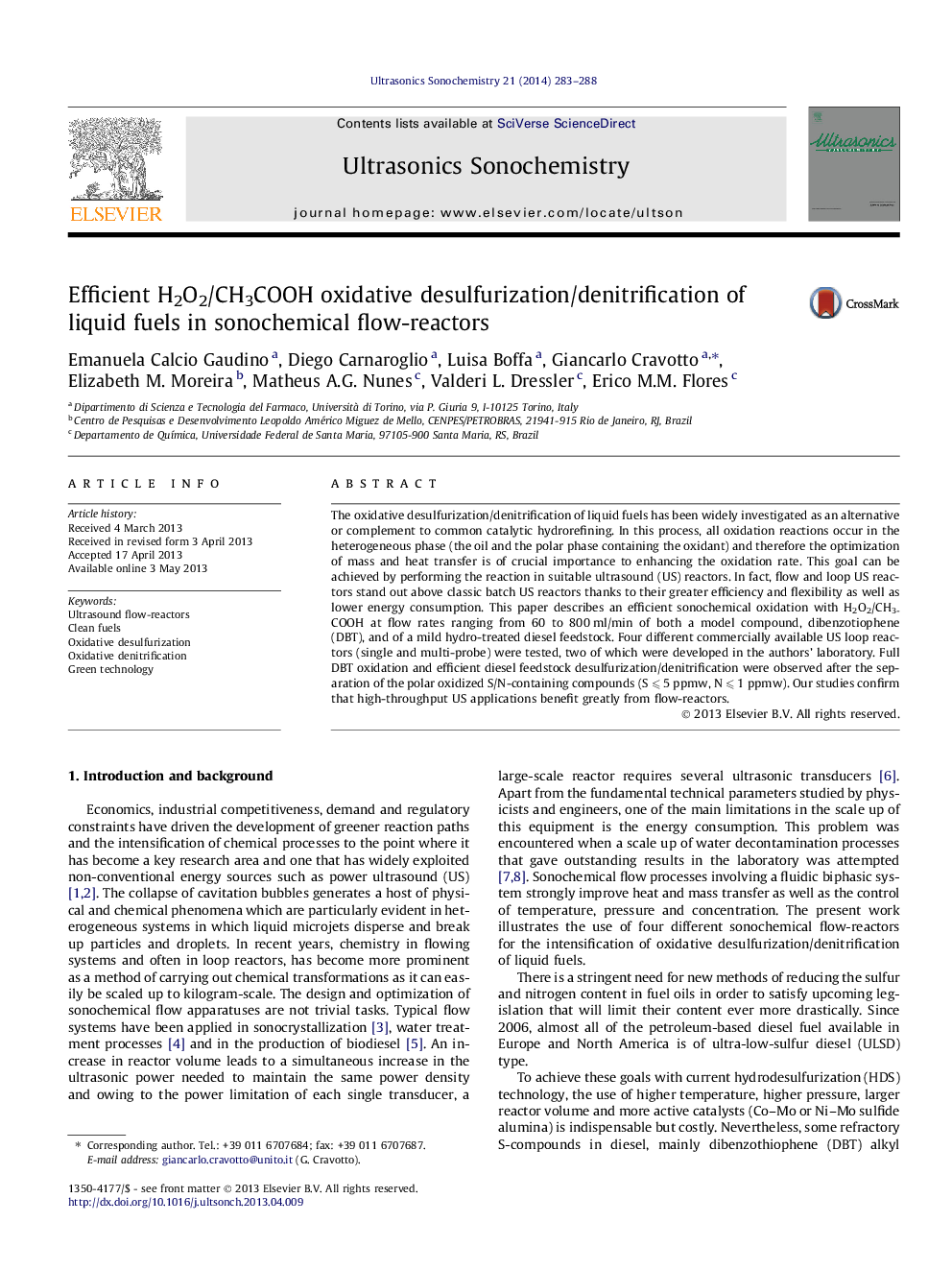| Article ID | Journal | Published Year | Pages | File Type |
|---|---|---|---|---|
| 10566115 | Ultrasonics Sonochemistry | 2014 | 6 Pages |
Abstract
The oxidative desulfurization/denitrification of liquid fuels has been widely investigated as an alternative or complement to common catalytic hydrorefining. In this process, all oxidation reactions occur in the heterogeneous phase (the oil and the polar phase containing the oxidant) and therefore the optimization of mass and heat transfer is of crucial importance to enhancing the oxidation rate. This goal can be achieved by performing the reaction in suitable ultrasound (US) reactors. In fact, flow and loop US reactors stand out above classic batch US reactors thanks to their greater efficiency and flexibility as well as lower energy consumption. This paper describes an efficient sonochemical oxidation with H2O2/CH3COOH at flow rates ranging from 60 to 800 ml/min of both a model compound, dibenzotiophene (DBT), and of a mild hydro-treated diesel feedstock. Four different commercially available US loop reactors (single and multi-probe) were tested, two of which were developed in the authors' laboratory. Full DBT oxidation and efficient diesel feedstock desulfurization/denitrification were observed after the separation of the polar oxidized S/N-containing compounds (S ⩽ 5 ppmw, N ⩽ 1 ppmw). Our studies confirm that high-throughput US applications benefit greatly from flow-reactors.
Related Topics
Physical Sciences and Engineering
Chemistry
Chemistry (General)
Authors
Emanuela Calcio Gaudino, Diego Carnaroglio, Luisa Boffa, Giancarlo Cravotto, Elizabeth M. Moreira, Matheus A.G. Nunes, Valderi L. Dressler, Erico M.M. Flores,
